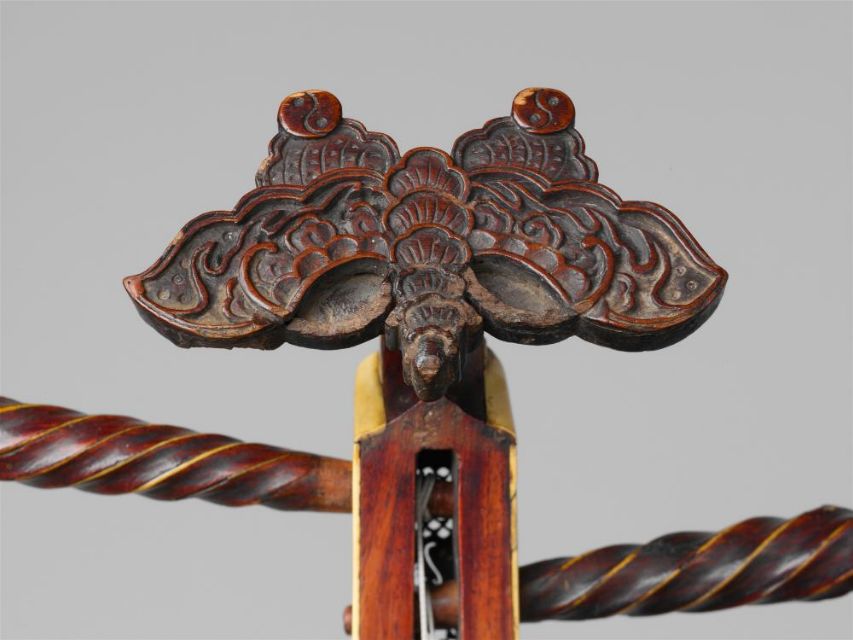Yin, Yang and the bat
In addition to the main body decorated with ivory plaques, a bat motif (bat in Chinese is homophonous with “good luck”) with leafy tendrils and the symbol of yin and yang, representing the natural balance of the Dao, are carved at the end of the pipa’s neck, visible while the instrument is played, re-emphasizing the theme of auspiciousness.
Believing that the immortals and spirits of Buddhism and Daoism could "secretly help the ruler to govern the country", Zhu Yuanzhang, the first emperor of the Ming, was himself a supporter of the co-existence of Confucianism, Buddhism, and Daoism. By the mid- to late Ming dynasty, numerous temples dedicated to Laozi, Confucius, and Sakyamuni had been established. It is not surprising, therefore, that the decorative motifs found on the pipa, no matter what religion they come from, coexist harmoniously, as they all convey good wishes for an affluent and peaceful life.
